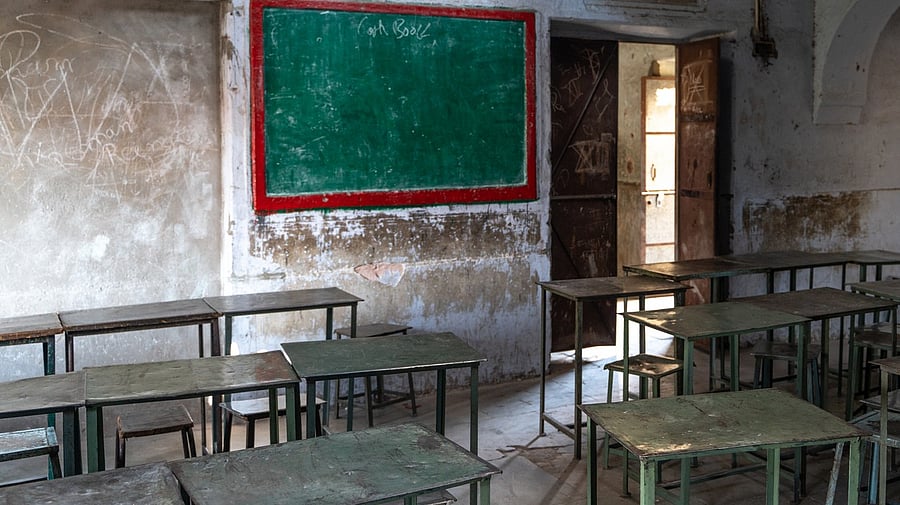
Representative image of a school.
Credit: iStock Photo
The Union Education Ministry’s latest data from the Unified District Information System for Education Plus (UDISE+) present a challenging picture of education in the country in its various aspects. They reveal gaps and problems on various fronts, including enrolment, retention of students, infrastructure, and other facilities.
There is a decline in the enrolment of students from 251.7 million in 2022-23 to 248 million in 2023-24. A decline of 3.7 million, which amounts to 1.47 per cent, is a matter of serious concern. The decline has been seen across gender groups and social categories.
This happened when the number of schools increased in this period by over 5,000, from 1.466 million to 1.471 million. The Gross Enrolment Ratio (GER) is about 95 per cent at the preparatory level, but it gets worse at higher levels.
According to the report, there is no dropout at the foundational level (pre-primary to Class 2), but it increases at later stages and is maximum at the secondary level. Bihar, Uttar Pradesh, and Maharashtra have seen the highest drop in enrolments.
The report reveals several gaps and deficiencies in the case of infrastructure. Though most schools have basic facilities like electricity and gender-specific toilets, many advanced amenities are either absent or inadequate.
Functional computers are available in only 57 per cent of schools, Internet access is present in over 53 per cent, and ramps with handrails are available in just 52 per cent of institutions. Computers and the Internet have become basic facilities now, and they should be made available in all schools.
The data also show that while many schools are underutilised, in some states there is a shortage of them. The schooling picture varies from state to state.
According to the report, the dropout rate in Karnataka increased in 2023-24: 1.7 at the primary level, 2.7 at the upper primary level, and 22.09 at the secondary level.
Backwardness of some regions, poor socio-economic status of many families, migration of parents, and lack of facilities in schools are among the reasons for the low enrolment rate.
The National Education Policy 2020, the Sarva Shiksha Abhiyan, and the Right to Education Act have all aimed at universalising education, but even now there are serious deficiencies in infrastructure and the quality of education provided in schools. The country’s spending on education in the last few years is in the range of 4-4.6 per cent. It is not low in comparison with many countries.
But the problem highlighted by the report shows that the spending on school education should be better utilised or even increased. There are many other countries that make higher allocations for education.
